Inspecting, Lubing, and Setting Bearings
First order of business is to clean the old grease and rust off of everything. I use WD-40, Brakleen, and automotive type of solvents. If you have to, use a brass toothbrush to scrub things. Sometimes, when things are bad enough, I'll use a stainless steel toothbrush. For bearings and cages, use a pick or a small screwdriver to get into the tight areas! Make sure all grease, grime, and grit are gone.
Next order of business is to inspect your components. Check the cups, cones, and bearings.
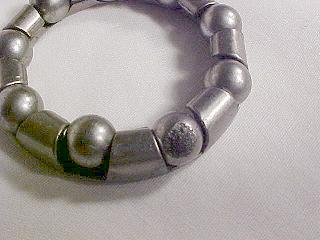
This bearing has a bad spot. Either from rusting or breaking from a foreign object. It won't be a good bearing to save unless you replace the ball.
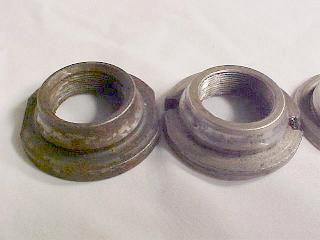
The cone on the left has obvious rust problems. I haven't cleaned it yet so it might turn out okay. The cone on the right has damage all the way around through the machined surface. Using this cone will make your pedals or forks feel like you have sand in them! Water and rust is the typical culprit.
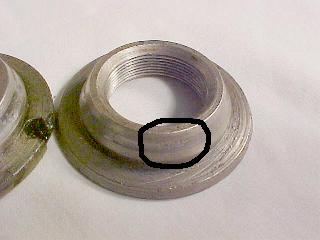
In the circled area is a small glitch on the bearing surface. You might be able to get away with using using it or it might still give you problems. Tough call!
Okay, your bearings are good and so are your cones and cups. All of your cups are installed. Smear a thin layer of your grease of choice on them where the bearing will ride. I usually use Chevron EPII which is a wheel bearing grease. Thick to keep the water out and it is on an old ballooner, so I'm not trying to go fast. Smear some all over your bearings, making sure you "pack" all the crevises and cavities. I even put a thin layer on the cones before I install them.
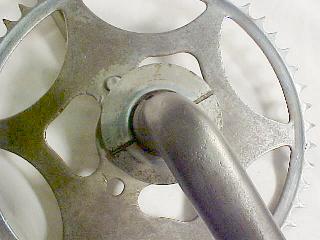
To set the bearings I usually turn in the cone while rotating the assembly. Turn until snug, Do Not Over Tighten! Snug is when there is no more play. Notice which way the lines face on the cone above.
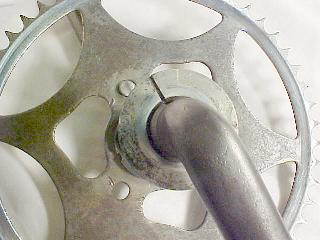
Now, back the cone off 1/4 turn. The assembly will feel loose, a little side play. That is Okay! Install the keyed washer and the locknut, tighten. Now check the side play. Just about gone, just the correct amount is left. Rarely does this method not work. It is the same way to do car and truck axles!
Now go out and ride!!
Questions? Suggestions? Send an email
This Page Copyright (©) 2002